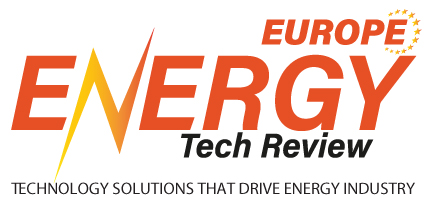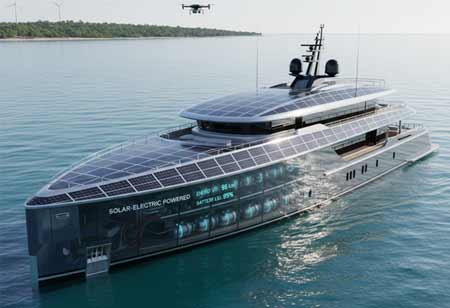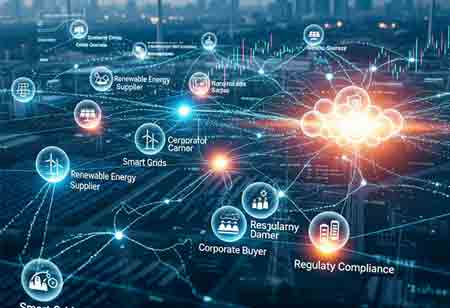CLOSE
Specials
I agree We use cookies on this website to enhance your user experience. By clicking any link on this page you are giving your consent for us to set cookies. More info
Be first to read the latest tech news, Industry Leader's Insights, and CIO interviews of medium and large enterprises exclusively from Energy Tech Review
Thank you for Subscribing
Europe's Clean Energy Market Comes of Age
Europe is rapidly transforming into a decarbonised energy system, with clean energy becoming a cornerstone of its economy, driving significant market growth and investment.

By
Energy Tech Review | Monday, November 17, 2025
Stay ahead of the industry with exclusive feature stories on the top companies, expert insights and the latest news delivered straight to your inbox. Subscribe today.
The European continent is in the midst of a definitive and accelerating pivot towards a decarbonised energy system. This transformation, underpinned by robust policy frameworks and significant economic tailwinds, has propelled the clean energy solutions market from a niche segment into a foundational pillar of the continent's economy. The current landscape is not one of tentative steps but of large-scale deployment, sophisticated financial mobilisation, and a realigning of the entire energy industry.
Market Size and Trajectory
The European clean energy market has expanded to an exceptional scale, reflected in both its physical deployment and its economic value. Although estimates vary depending on whether the assessment is limited to new project investments or encompasses the broader electricity market, all analyses indicate a sector of substantial and accelerating importance. In 2024, the European renewable electricity market exceeded $1 trillion in value, while assessments focused on annual investment in new renewable assets and technologies placed the market between $240 billion and $290 billion, supported by projected yearly growth rates above 7 per cent.
The sector’s physical integration is equally notable. Renewable energy sources accounted for 25.4 per cent of total final energy consumption in the European Union, with the electricity sector demonstrating the most substantial progress: renewables generated 47 per cent of all EU electricity that year. This expansion is being driven primarily by advances in several core technologies.
Solar power has experienced remarkable growth, with the EU installing 65.5 GW of new capacity in recent times. The market continues to mature, as reflected in the increasing dominance of utility-scale systems, which accounted for 42 per cent of new installations and signal a decisive shift toward industrial-scale generation. Wind power remains the single most significant contributor to renewable electricity generation in the EU, accounting for roughly 37 per cent of total generation, bolstered by substantial investment in offshore wind due to its scale advantages and high capacity. Alongside these established sectors, emerging segments such as green hydrogen and battery energy storage are gaining strategic prominence, supported by industrial investment and policy frameworks that enable higher levels of renewable integration and system flexibility.
Investment Trends and Financial Instruments
Capital flows into Europe’s clean energy sector have expanded rapidly, with investment rising to reach $134.4 billion. This influx is being driven by a combination of public de-risking measures and increasingly sophisticated private-sector financial instruments. Public funding mechanisms—most notably the Recovery and Resilience Facility, which earmarks €184 billion for energy initiatives, and the InvestEU program—serve as significant catalysts by leveraging private investment at scale.
Within this environment, several financial instruments have become central to the investment landscape. Green bonds, now firmly mainstream, accounted for 6.9 per cent of all EU bond issuances and 12.8 per cent of corporate issuances. The introduction of the European Green Bond Standard has strengthened transparency and investor confidence, positioning green bonds as a leading tool for financing major clean-energy projects. Power Purchase Agreements have similarly matured, with the market expected to reach $181.8 billion at a 34.2 per cent CAGR. Corporate PPAs dominate the space, accounting for 83 per cent of activity and reflecting a notable shift as large companies directly procure renewable power. Virtual PPAs, representing 55 per cent of transactions, have gained prominence by offering financial hedging benefits without requiring physical delivery. Offshore wind remains a standout segment, attracting $39 billion in the first half of 2025 alone—already exceeding the total for all of 2024 and demonstrating strong investor confidence in large-scale, long-duration infrastructure assets.
Competitive Dynamics
The European clean energy market has evolved into a competitive and multifaceted ecosystem shaped by the interaction of three distinct categories of participants, all operating within a policy environment supported by initiatives such as the Net-Zero Industry Act. Established utilities and industrial manufacturers—the incumbents—remain central to the sector’s transformation. Leveraging substantial financial resources, extensive grid expertise, and longstanding customer relationships, they continue to lead the development of capital-intensive assets such as offshore wind projects while actively acquiring or partnering with technology-driven firms. Their strong foundations in wind and heat-pump manufacturing further reinforce their strategic position. Alongside them, a group of innovators comprising agile technology companies, specialised developers, and research-oriented startups is propelling advancements in energy storage, digital grid solutions, and next-generation solar. With a significant share of future emissions reductions expected to depend on technologies not yet deployed at scale, targeted policy tools—including regulatory sandboxes—are accelerating progress within this cohort.
At the same time, new entrants are reshaping market dynamics. Large corporate and industrial energy consumers, particularly in technology, manufacturing, and retail, now drive the majority of the corporate PPA segment, directly influencing demand and project financing. Additionally, fast-growing demand centres such as data centres and AI infrastructure have emerged as major procurers of clean energy, further intensifying the need for new dedicated renewable generation capacity.
The European clean energy market is characterised by robust growth, deep financial integration, and a competitive landscape. It has successfully transitioned from a subsidy-driven experiment to a self-sustaining, multi-trillion-dollar economic force, driven by sophisticated capital and a diverse set of industrial and corporate players.

Copyright © 2025 Energy Tech Review. All rights reserved






